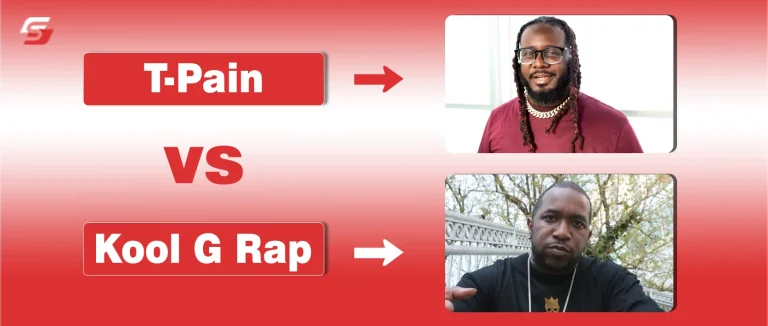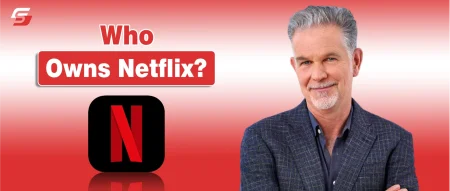Two artists from different worlds, T-Pain and Kool G Rap, have shaped hip-hop in ways that few could have predicted. One revolutionized sound with digital innovation and melody; the other carved his name through complex rhyme patterns and street-born realism. But what truly separates them?
And more importantly, what connects them across decades of changing beats and beliefs? This comparison isn’t just about two musicians, it’s a reflection of how hip-hop itself has evolved, adapted, and reinvented its identity through time.
As we explore their journeys, a deeper story unfolds, one that reveals the pulse of an art form constantly balancing between tradition and transformation.
Artist Profiles and Origins of T-pain & Kool G Rap
Both artists represent distinct eras and regions of hip-hop evolution, reflecting how geography, technology, and personal background shaped their creative identities.
While T-Pain symbolizes the digital transformation of modern hip-hop, Kool G Rap embodies the lyrical intensity and storytelling tradition of New York’s golden age.
Who is T-Pain? Florida-Based Innovator and Auto-Tune Pioneer
T-Pain, born Faheem Najm in Tallahassee, Florida, is an American rapper, singer, and producer known for pioneering Auto-Tune vocal effects in modern hip-hop and R&B.
Key Attributes and Contributions:
- Debut Album: Rappa Ternt Sanga (2005), blending rap with melodic harmonies.
- Innovation: Transformed vocal production through creative Auto-Tune usage.
- Musical Style: Mixes Southern hip-hop, R&B melodies, and digital sound design.
- Influence: Shaped artists like Kanye West, Lil Wayne, Future, and Travis Scott.
- Legacy: Opened new paths for melodic rap and technological artistry in modern music.
Who is Kool G Rap? New York Lyricist and East Coast Legend
Kool G Rap, born Nathaniel Thomas Wilson in Corona, Queens, is a foundational East Coast rapper known for his lyrical complexity and street-centered storytelling.
Key Attributes and Contributions:
- Early Career: Rose to fame with Kool G Rap & DJ Polo in the late 1980s.
- Lyrical Style: Renowned for multisyllabic rhymes and narrative depth.
- Musical Influence: Helped define mafioso rap and influenced Nas, Jay-Z, and The Notorious B.I.G.
- Cultural Identity: Represents the gritty realism and authentic lyricism of New York’s golden age.
- Recognition: Frequently cited among the most skilled lyricists in hip-hop history.
Early Influences, Musical Upbringing, and Entry into Hip-Hop
T-Pain began producing music at age 10, converting his bedroom into a home studio inspired by Teddy Riley’s new jack swing, Akon’s fusion sound, and Southern rap pioneers like Outkast. His self-driven production experiments led to his signature Auto-Tune sound and digital style.
In contrast, Kool G Rap emerged from the East Coast hip-hop scene of the 1980s, refining his lyrical craft through street battles and cyphers. Guided by DJ Marley Marl and the Juice Crew collective, he built a reputation for narrative rap and technical lyricism, establishing the foundation for New York’s hardcore rap movement.
Old-School vs New-School: The Generational Divide
The artistic contrast between Kool G Rap and T-Pain reflects the broader generational divide in hip-hop. Kool G Rap emerged in the 1980s, when hip-hop focused on street narratives, lyricism, and analog production.
T-Pain rose in the 2000s, an era defined by digital recording, Auto-Tune innovation, and melodic fusion. This divide represents more than a difference in sound, it highlights hip-hop’s evolution from a lyrical street movement to a digitally produced global culture. Their respective careers illustrate how each generation redefined authenticity, creativity, and musical identity in rap.
How Their Active Eras (1980s vs 2000s) Shaped Their Artistic Identities
Kool G Rap, active since the mid-1980s, developed his identity during the golden age of hip-hop, when lyrical skill, rhythm precision, and street storytelling defined success. His music reflected urban realities, New York street culture, and the competitive nature of early rap battles. The limited studio technology of the time, analog beats, sampled loops, and turntable scratching, shaped his raw and authentic sound.
T-Pain, who began dominating charts in the mid-2000s, formed his identity in the digital production era, where technology allowed greater experimentation. His integration of Auto-Tune, R&B melodies, and Southern hip-hop rhythms redefined the boundaries of rap vocals. The online music revolution and MySpace-era exposure helped T-Pain establish a futuristic brand of hip-hop that merged innovation and accessibility.
Evolution of Rap Culture from Analog Storytelling to Digital Experimentation
The 1980s hip-hop scene, represented by Kool G Rap, was rooted in analog recording and lyrical expression. Artists depended on vinyl samples, drum machines, and live DJ setups to tell stories about street life, social issues, and cultural identity. The absence of digital editing tools demanded lyrical precision and performance skill.
In the 2000s, T-Pain became a symbol of digital experimentation in rap culture. His production relied on computer-based audio workstations, Auto-Tune modulation, and electronic layering.
This transition from analog to digital transformed hip-hop from a local art form into a mainstream global genre. While Kool G Rap emphasized verbal complexity, T-Pain emphasized sonic innovation, illustrating hip-hop’s continuous adaptation to new technology.
What Each Represents in Hip-Hop’s Timeline
Kool G Rap represents the foundation phase of hip-hop, an era that valued lyricism, street credibility, and narrative depth. His contributions established the blueprint for East Coast rap and inspired later legends like Nas, Eminem, and Jay-Z. He is widely regarded as a cornerstone of hardcore rap, preserving the art of complex rhyme structure.
T-Pain represents the modernization phase of hip-hop, where melody, technology, and commercial reach became dominant. His work symbolizes the fusion of rap and R&B, the rise of digital artistry, and the shift toward emotion-driven vocal expression.
Through his use of Auto-Tune and digital production, T-Pain helped bridge traditional rap with mainstream pop culture, marking a new chapter in hip-hop’s global expansion.
T-Pain vs Kool G Rap Net Worth Comparison
The financial success of T-Pain and Kool G Rap reflects not only their talent but also the distinct paths each carved in hip-hop’s changing economy. T-Pain built wealth through digital innovation, hit singles, and mainstream collaborations, while Kool G Rap’s value stems from his longevity, underground credibility, and influence on lyrical craftsmanship.
What Is T-Pain’s Net Worth and How Does His Music Career Contribute?
According to Celebrity Net Worth, T-Pain’s net worth in 2025 is estimated at around $1 million, supported by multiple revenue streams. T-Pain earns income from his chart-topping albums, streaming royalties, live tours, and collaborations with artists such as Kanye West, Lil Wayne, and Chris Brown. T-Pain’s diverse income from music production, streaming, and touring reflects how rappers make money beyond albums, turning artistry into entrepreneurship.
His success in producing and songwriting further diversifies his earnings. Beyond music, T-Pain also invests in digital entertainment and media, reinforcing his position as a financially adaptive artist in the modern hip-hop industry. His strong streaming presence and consistent touring schedule sustain long-term financial stability.
How Much Is Kool G Rap Worth and What Are His Key Income Sources?
According to Celebrity Net Worth, Kool G Rap’s net worth is estimated at around $1.5 million, primarily accumulated through his long-standing career as a rapper, lyricist, and collaborator in the East Coast hip-hop scene. Kool G Rap generates income from his solo albums, live performances, and appearances on projects by major rap figures like Nas, Big Pun, and Mobb Deep.
His lyrical influence continues to earn him recognition, contributing indirectly to his financial worth through legacy-driven royalties and guest features. While less commercial than modern rap icons, Kool G Rap’s value lies in his historical importance and continued demand in underground hip-hop circles. Artists like Jelly Roll demonstrate similar career arcs, blending musical storytelling with commercial success, much like T-Pain and Kool G Rap in their respective eras.
Who Has the Higher Net Worth, T-Pain or Kool G Rap, in 2025?
| Artist | Estimated Net Worth (2025) | Primary Income Sources | Career Highlights |
| T-Pain | $1 million | Music streaming, tours, Auto-Tune royalties, brand deals | Grammy Awards, major collaborations, viral resurgence |
| Kool G Rap | $1.5 million | Classic rap royalties, live shows, collaborations | East Coast pioneer, influence on 90s and 2000s rappers |
Musical Style Comparison: Melody vs Lyrical Complexity
The musical styles of T-Pain and Kool G Rap illustrate two distinct creative philosophies in hip-hop. T-Pain focuses on melodic innovation, vocal layering, and the use of Auto-Tune to blend rap and R&B into a smooth, digital sound.
Kool G Rap, in contrast, emphasizes lyrical density, rhyme precision, and hardcore flow, shaping the foundations of East Coast rap. Their contrasting approaches represent the balance between technical lyricism and sonic experimentation that defines hip-hop’s diversity.
T-Pain’s Melodic Rap, Harmony, and Auto-Tune Signature
T-Pain, an American rapper and producer from Tallahassee, Florida, developed a distinctive melodic rap style built on harmonized vocals and Auto-Tune modulation. His sound merges Southern hip-hop rhythms with R&B melodies, creating a fusion that appeals to both rap and pop audiences.
Musical Attributes of T-Pain:
- Vocal Technique: Uses Auto-Tune not as correction, but as a creative instrument to craft a futuristic tone.
- Harmony and Structure: Incorporates multi-layered harmonies and rhythmic patterns influenced by funk, soul, and electronic music.
- Signature Tracks: Songs like Buy U a Drank, Bartender, and Can’t Believe It demonstrate his mastery of melody-driven rap.
- Influence: Inspired artists such as Kanye West, Travis Scott, and Lil Uzi Vert to explore melodic rap and vocal experimentation.
T-Pain’s artistry represents the modernization of rap performance, where emotion, melody, and technology replace traditional lyrical confrontation with sonic depth and accessibility.
Kool G Rap’s Multisyllabic Rhyme Schemes and Hardcore Flow
Kool G Rap, a veteran rapper from Queens, New York, is recognized as one of hip-hop’s most technically skilled lyricists.
Musical Attributes of Kool G Rap:
- Rhyme Technique: Crafts extended rhyme chains and internal wordplay that showcase linguistic control.
- Flow and Delivery: Maintains aggressive pacing and rhythmic precision, typical of hardcore East Coast rap.
- Thematic Focus: Depicts urban survival, power dynamics, and morality through vivid storytelling.
- Legacy Influence: Inspired rappers such as Nas, Big Pun, Eminem, and Raekwon, who credit him for advancing lyrical craftsmanship.
Kool G Rap’s contribution lies in preserving the intellectual and narrative strength of rap, demonstrating how structure and complexity elevate hip-hop to a poetic art form.
How Rhythm, Cadence, and Sound Texture Define Each Artist’s Craft
T-Pain constructs rhythm through syncopated beats, melodic repetition, and digital layering that create a smooth, dance-oriented sound texture. His cadence often follows sung phrasing patterns rather than spoken bars, merging rhythmic flow with tonal harmony. The use of 808 bass, electronic synths, and Auto-Tune modulation gives his tracks a polished and immersive audio quality.
Kool G Rap, in contrast, builds rhythm through rapid-fire delivery, staccato phrasing, and off-beat timing that mirrors jazz-inspired syncopation. His sound texture remains raw, relying on vinyl sampling, drum breaks, and DJ cuts characteristic of 1980s boom-bap production. This organic approach enhances the gritty realism of his narratives.
The difference in rhythm and sound texture defines each artist’s creative identity: T-Pain symbolizes melodic evolution and digital fluidity, while Kool G Rap represents verbal precision and analog authenticity.
T-Pain and Kool G Rap: Bridging Generations and Expanding Hip-Hop’s Legacy
T-Pain and Kool G Rap represent two defining generations of hip-hop, bridging the genre’s transformation from raw lyrical storytelling to melodic digital innovation.
Kool G Rap, the East Coast pioneer of the 1980s, built rap’s foundation on multisyllabic rhyme density and street-rooted authenticity. T-Pain, emerging from Florida in the 2000s, redefined that foundation with melody, Auto-Tune technology, and mainstream crossover appeal.
Despite their stylistic divide, both artists contribute to the same continuum of hip-hop artistry, where technical mastery aligns with cultural evolution. Together, they affirm that hip-hop’s endurance depends not on uniformity but on reinvention, innovation, and generational dialogue.
FAQs: T-Pain vs Kool G Rap, Style, Influence, and Legacy
Why are T-Pain and Kool G Rap compared in hip-hop history?
T-Pain and Kool G Rap are compared because they represent two defining eras of hip-hop—melodic innovation and lyrical mastery.
What makes T-Pain’s rap style unique?
T-Pain’s rap style stands out for its melodic delivery, Auto-Tune innovation, and fusion of R&B and hip-hop rhythms.
How did Kool G Rap shape East Coast hip-hop?
Kool G Rap shaped East Coast hip-hop through multisyllabic rhyme schemes, gritty storytelling, and technical wordplay.
Who influenced modern rappers more, T-Pain or Kool G Rap?
Both influenced modern rap differently: T-Pain through melody and vocal effects, Kool G Rap through lyrical structure and flow.











